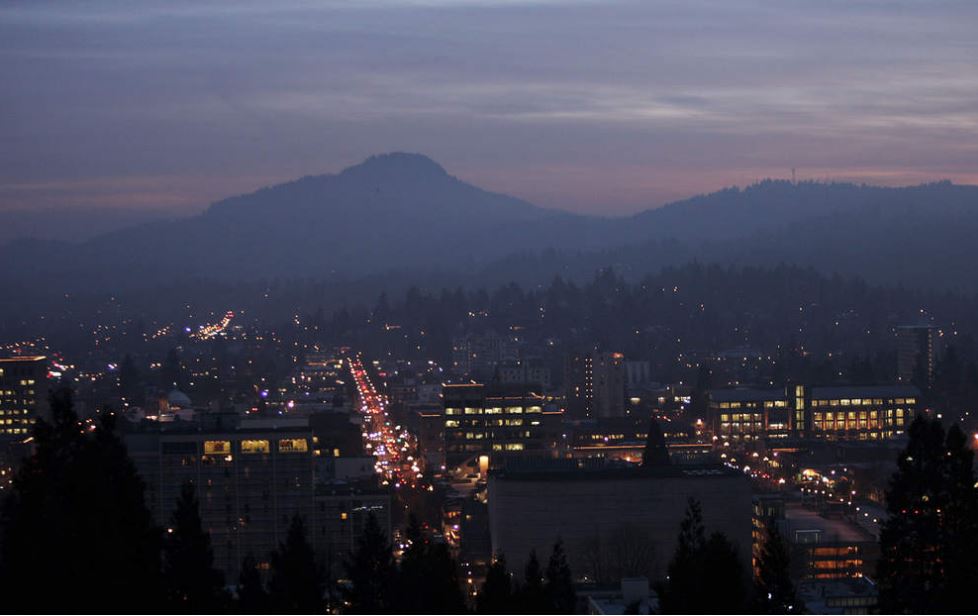A landscape for innovation
A national economic analyst says Eugene has what it takes to be an entrepreneurial hub

By: Sherri Buri McDonald
November 7, 2016
The Register Guard
Innovation districts — places where research-driven institutions and high-growth firms connect with creative startups, spurring ideas and jobs — are popping up in cities all over the United States, from Atlanta to Seattle.
Eugene has many of the ingredients to build such a district in its downtown, said Scott Andes of the Brookings Institution, a Washington, D.C.-based think tank that has been tracking innovation districts. Andes recently gave a presentation to more than 400 people at a Regional Accelerator and Innovation Network (RAIN) event at the Hult Center in Eugene.
One of the examples he shared of a thriving innovation district was the area clustered around the University of Pennsylvania and Drexel University.
“You’re not a Philadelphia,” Andes admitted.
But Eugene has “an opportunity to be a lifestyle destination for entrepreneurs who don’t want to be in the Bay Area or Boston,” he said.
Andes spoke during the RAIN event that featured presentations by the founders of nine start-up firms who had just completed the 16-week business accelerator program.
To be successful, innovation districts require several types of assets, Andes said.
They need economic assets, such as universities, research-oriented firms and creative industries, he said.
Downtown Eugene has the University of Oregon, Northwest Christian University and Lane Community College, a cluster of high-growth tech companies, plus many computer game developers, marketing and advertising firms, and architecture and design studios.
Innovation districts need physical assets, such as light rail and bike lanes, Andes said.
“Connecting ideas requires connecting places,” he said.
These districts need affordable spaces where people can work, such as co-working spaces, so-called “maker spaces,” where innovators share equipment and ideas, and open spaces, including building lobbies and other common spaces where people can interact, Andes said.
Downtown Eugene has a range of co-working spaces including Fertilab, which helps provide education and support to innovators working on business ideas; Lane Community College’s Small Business Development Center; and RAIN’s new downtown hub, home to one of RAIN’s two business accelerators. The other one is in Corvallis.
Innovation districts also need networking assets — places and opportunities for people to mingle, brainstorm and exchange ideas, Andes said. He gave the example of Boston’s District Hall, a gathering spot for innovators that was created through a public-private partnership.
A culture of collaboration is another essential ingredient for innovation districts, Andes said.
“In my one day in Eugene, it seems you have it,” he said.
“I met with people from 15 different organizations. That doesn’t happen unless people at least pretend to get along.”
Andes encouraged the Eugene audience to take stock of Eugene’s assets and to play to its strengths.
“You’re a college town,” he said. “Do you know what the University of Oregon and Lane Community College are really good at?”
Knowing the UO and LCC’s fortes allows local companies and jobs to connect to those strengths, Andes said.
A final ingredient — often “the 3,000-pound gorilla in the room” — is access to capital and investment, he said.
Despite the challenges of building an innovation district, 15 to 20 cities across the United States are starting to figure this out, Andes said.
“There’s a huge opportunity here.”
